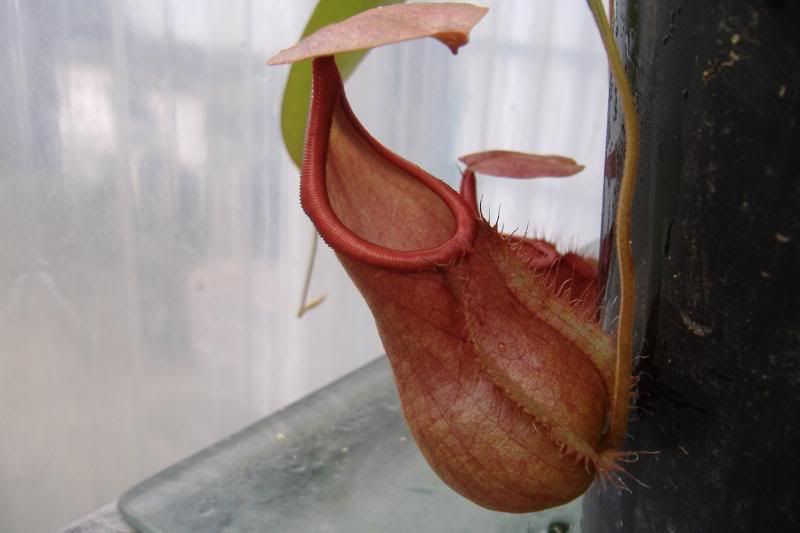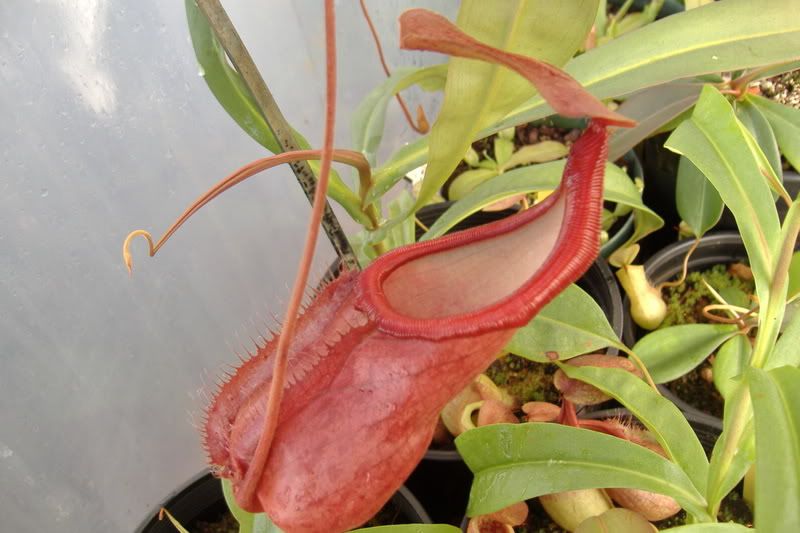Some Plants From Thailand
Jan 1, 2009 9:58:59 GMT -10
Post by marka on Jan 1, 2009 9:58:59 GMT -10
Marcello, you did ask so here they are 
First is this one:


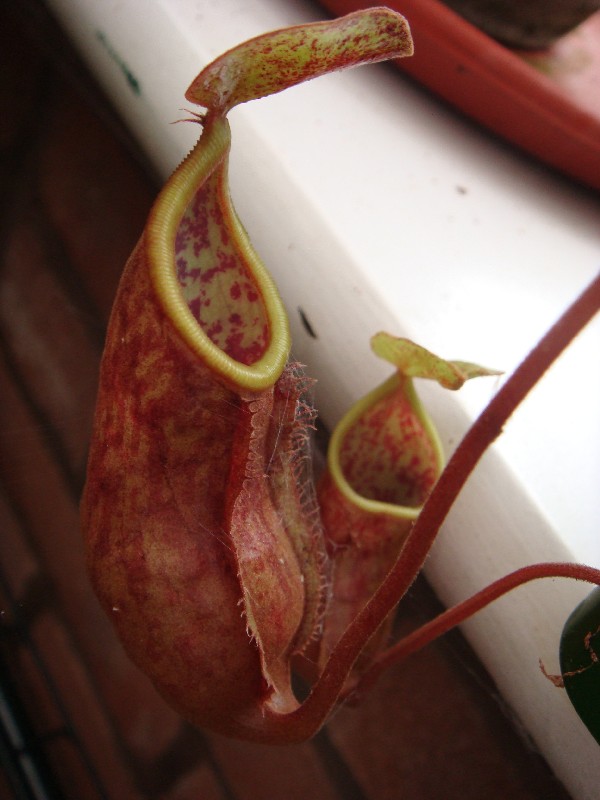
More recent pic.

Very very small hairs on the leaves, almost undetectable by touch.

Top of root

This one has been neglected somewhat, it's a very easy grower, tolerant of cool temps, tolerant of going dry, has never gone dormant and needs more sun that we have got recently in the UK!!
No2. was similar expect completely smooth. Unfortunately no pic at present.
No3. 'Giant Tiger'
To me these are Mirabilis Hybrids, probably with the 'Chumphon Red' form and thorelli, whatever that is, they have small hairs on the edge of the leaves, and thin leaves. You can see roots coming from the bottom of all the pots, apart from these thai plants, i've only ever seen this on Mirabilis.

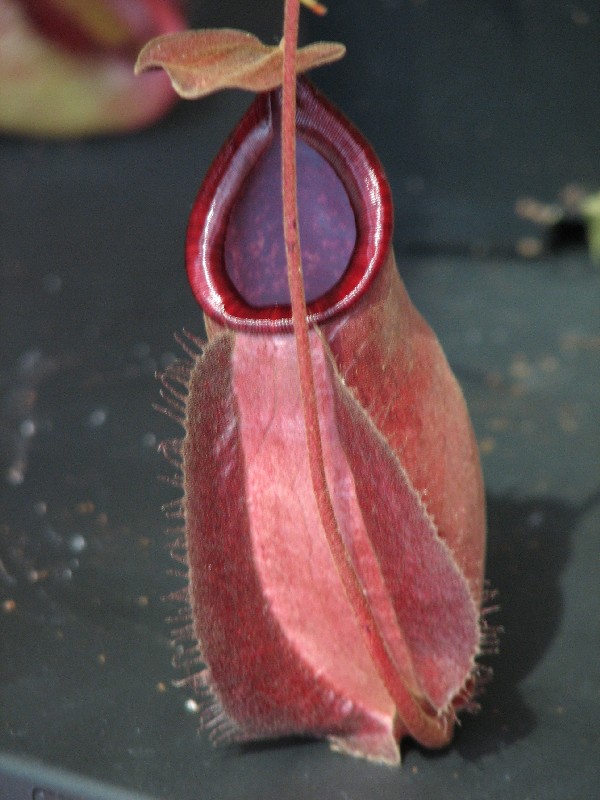
No4. Also 'Giant Tiger', same overall physiology but different shaped pitchers. Reminds of gracilis but for no particular reason.
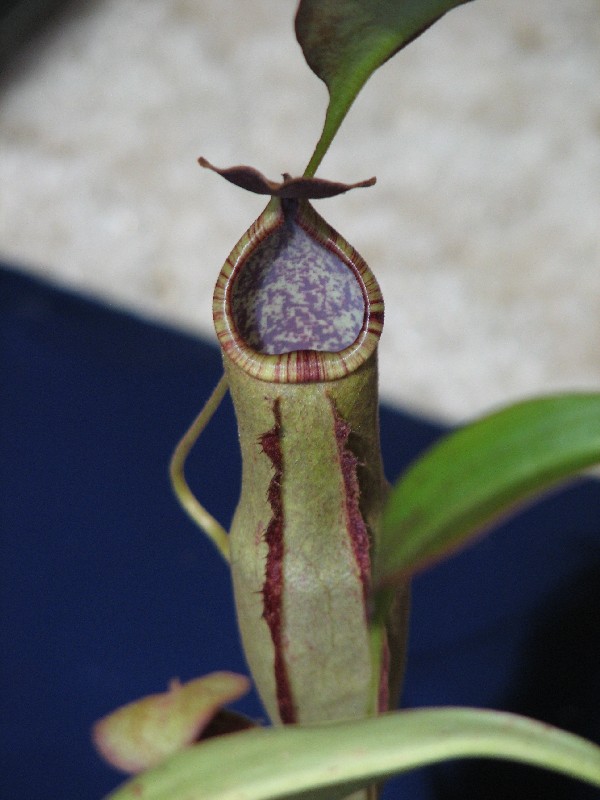
Both together,
![]()
farm4.static.flickr.com/3245/3157016284_6e9a4d10ff_o.jpg[/img]
All these guys love water, and they don't need to be very warm, ~20-24C, here's a few months growth. They are all standing permanently in water and the roots grow out the bottom of the pots.

No4 - Mirabilis, to me this clone has a lot in common with Viking except for pitcher shape, it looks different to other Thai neps I grow, the leaves are darker and it's more robust, the hairs on the leaf margin are minimal, it shrivels up at the slightest drought, whereas other Thai Mirabilis wilt first then recover when watered, its also harder to root form cutting than a typical Mirabilis. I have not yet looked for a rhizome on it.

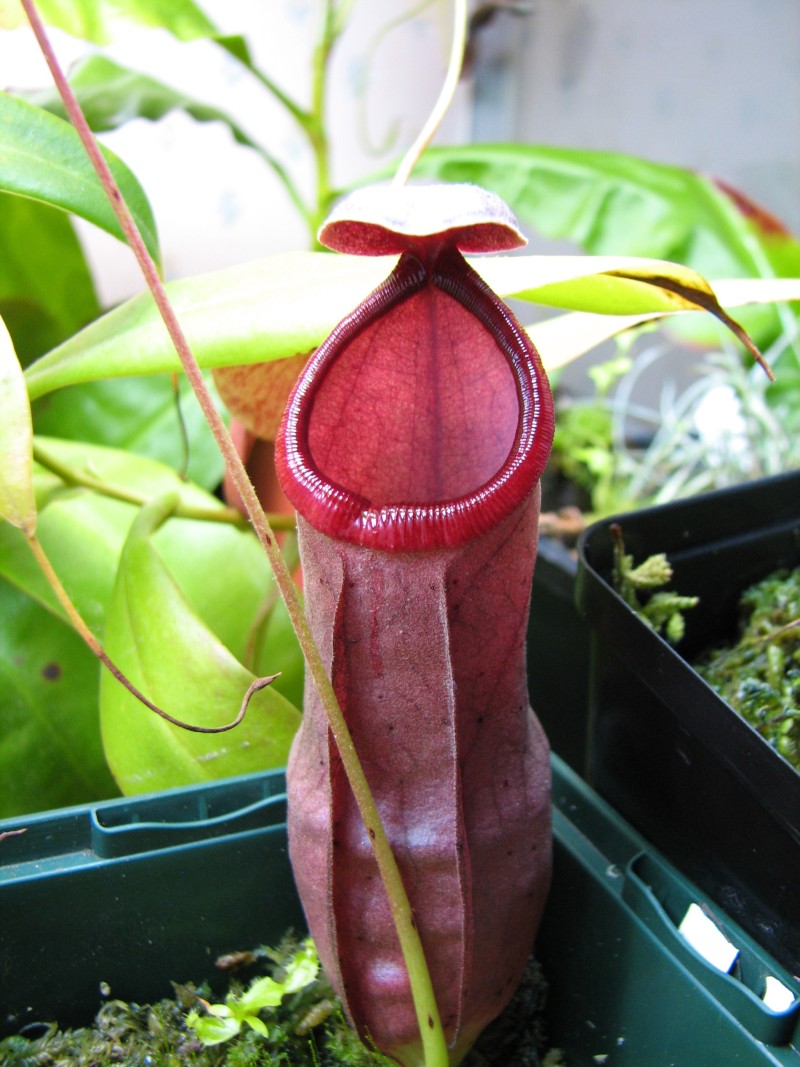
It grows roots like crazy!

Most of my plants went into an unplanned dormancy a few weeks ago and are just starting to recover, so i'm relying on old photos. Should get much better ones later in the year.

First is this one:



More recent pic.

Very very small hairs on the leaves, almost undetectable by touch.

Top of root

This one has been neglected somewhat, it's a very easy grower, tolerant of cool temps, tolerant of going dry, has never gone dormant and needs more sun that we have got recently in the UK!!
No2. was similar expect completely smooth. Unfortunately no pic at present.
No3. 'Giant Tiger'
To me these are Mirabilis Hybrids, probably with the 'Chumphon Red' form and thorelli, whatever that is, they have small hairs on the edge of the leaves, and thin leaves. You can see roots coming from the bottom of all the pots, apart from these thai plants, i've only ever seen this on Mirabilis.


No4. Also 'Giant Tiger', same overall physiology but different shaped pitchers. Reminds of gracilis but for no particular reason.

Both together,
farm4.static.flickr.com/3245/3157016284_6e9a4d10ff_o.jpg[/img]
All these guys love water, and they don't need to be very warm, ~20-24C, here's a few months growth. They are all standing permanently in water and the roots grow out the bottom of the pots.

No4 - Mirabilis, to me this clone has a lot in common with Viking except for pitcher shape, it looks different to other Thai neps I grow, the leaves are darker and it's more robust, the hairs on the leaf margin are minimal, it shrivels up at the slightest drought, whereas other Thai Mirabilis wilt first then recover when watered, its also harder to root form cutting than a typical Mirabilis. I have not yet looked for a rhizome on it.


It grows roots like crazy!

Most of my plants went into an unplanned dormancy a few weeks ago and are just starting to recover, so i'm relying on old photos. Should get much better ones later in the year.


 .
.
